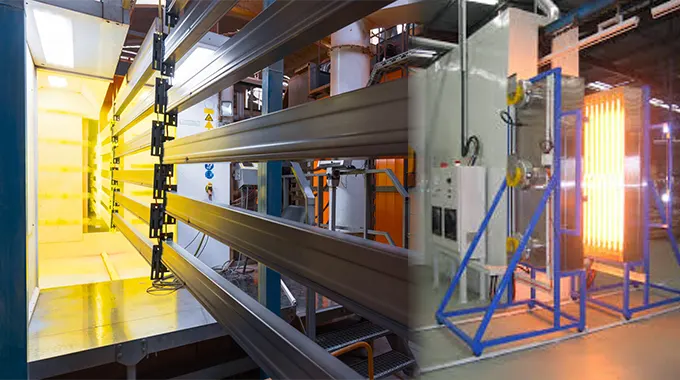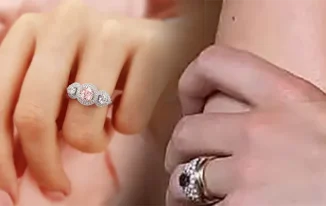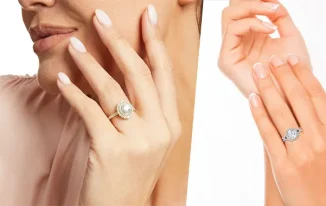Not all parts are created equal, and their shapes can make or break the powder coating process. From complex geometries to variations in thickness, every contour impacts how heat flows and cures the coating. Understanding these subtle influences can unlock better results, no matter how intricate the parts might be.
Heat Flow Dynamics Around Irregular Part Shapes
Powder coating ovens work by circulating heated air to evenly cure coatings, but irregularly shaped parts can disrupt this process. Sharp edges, curves, and non-linear surfaces create obstacles for consistent heat flow, causing uneven curing in some cases. These disruptions mean that some areas might overheat while others remain under-cured.
To counteract these challenges, powder coating ovens rely on strategic airflow systems. However, it’s not just the oven’s design that matters; part placement also plays a significant role. When parts with unusual shapes are positioned improperly, it can further block air circulation, compounding the problem. Operators often experiment with placement and spacing to ensure irregularly shaped parts receive consistent heat exposure.
Surface Area Variations Affecting Curing Uniformity
The surface area of a part directly affects how it interacts with heat in a powder coating oven. Parts with larger surface areas naturally absorb more heat, while smaller or thinner sections heat up faster. This imbalance can lead to inconsistencies in how well the coating cures across the part.
Powder coating ovens need to strike a delicate balance between temperature settings and curing time. When working with parts that feature widely varying surface areas, operators must carefully monitor the process to avoid over-curing the smaller sections or under-curing the larger ones. Adjusting the curing cycle based on the part’s dimensions ensures that every section, no matter how large or small, achieves the perfect finish.
Challenges with Deep Recesses and Hidden Corners
Deep recesses and hidden corners are among the most challenging features to cure effectively in a powder coating oven. These areas tend to trap air and block heat, preventing the coating from fully bonding to the substrate. Even with the most advanced ovens, these hard-to-reach areas can remain under-cured.
To address these challenges, operators often adjust air circulation settings or use specialized racks to position parts strategically. This ensures that even the most hidden corners receive adequate heat exposure. While the process might require additional time and attention, properly curing these tricky areas is essential for achieving a durable and consistent finish.
Impact of Part Orientation on Heat Absorption
The way a part is positioned in a powder coating oven can significantly impact how well it absorbs heat. When parts are oriented incorrectly, certain areas may face direct heat while others are shielded, leading to uneven curing. This is especially problematic for parts with asymmetrical shapes or varying thicknesses.
To optimize curing, parts should be positioned to maximize airflow and heat exposure to all surfaces. Operators often rotate or reposition parts during the process to ensure that every section receives equal treatment. By paying attention to orientation, they can prevent common issues like uneven finishes or weak adhesion in harder-to-reach areas.
Air Circulation Adjustments for Complex Geometries
Complex geometries present unique challenges for powder coating ovens, especially when it comes to maintaining consistent airflow. Parts with intricate designs can disrupt the oven’s air circulation, creating hot and cold zones that affect curing. These irregular airflow patterns can result in coatings that are inconsistent in appearance or durability.
To combat this, many ovens are equipped with adjustable airflow systems that allow operators to fine-tune the circulation. This ensures that even the most intricate parts receive uniform heat. Operators may also experiment with part spacing to enhance airflow, ensuring that every nook and cranny gets its share of heated air for a flawless finish.
Thermal Mass Differences in Thick and Thin Sections
Parts with varying thicknesses pose a unique challenge for powder coating ovens. Thicker sections take longer to reach the necessary curing temperature, while thinner sections can quickly overheat. This disparity can lead to coatings that are either under-cured or over-cured, affecting the part’s performance and appearance.
To address these differences, operators often rely on extended curing cycles or precise temperature adjustments. By carefully monitoring the curing process, they can ensure that both thick and thin sections are treated equally. Advanced ovens with multi-zone heating capabilities are particularly effective in managing these thermal mass differences, delivering a consistent and high-quality finish across the entire part.













